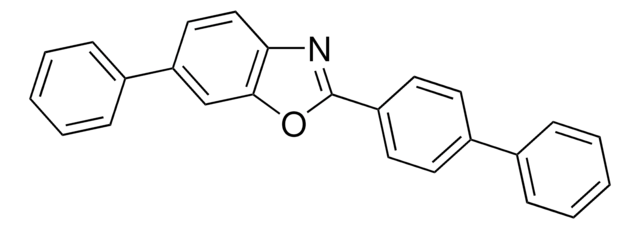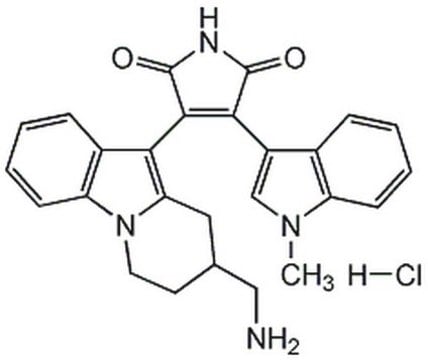P3754
1,4-Bis(5-phenyl-2-oxazolyl)benzene
BioReagent, suitable for scintillation
Synonym(s):
1,4-Bis(5-phenyl-2-oxazolyl)benzene, 2,2′-p-Phenylene-bis(5-phenyloxazole), Di(phenyl-5-oxazolyl-2)-1,4-benzene, POPOP
About This Item
Recommended Products
product line
BioReagent
form
powder
mp
242-246 °C (lit.)
suitability
suitable for scintillation
SMILES string
c1ccc(cc1)-c2cnc(o2)-c3ccc(cc3)-c4ncc(o4)-c5ccccc5
InChI
1S/C24H16N2O2/c1-3-7-17(8-4-1)21-15-25-23(27-21)19-11-13-20(14-12-19)24-26-16-22(28-24)18-9-5-2-6-10-18/h1-16H
InChI key
MASVCBBIUQRUKL-UHFFFAOYSA-N
Looking for similar products? Visit Product Comparison Guide
General description
Application
Features and Benefits
- High fluorescence quantum yield.
- High molar absorptivity.
- Large Stokes Shift.
- High Photostability in most organic solvents.
related product
Signal Word
Warning
Hazard Statements
Precautionary Statements
Hazard Classifications
Acute Tox. 4 Oral - Eye Irrit. 2
Storage Class Code
11 - Combustible Solids
WGK
WGK 2
Flash Point(F)
Not applicable
Flash Point(C)
Not applicable
Personal Protective Equipment
Certificates of Analysis (COA)
Search for Certificates of Analysis (COA) by entering the products Lot/Batch Number. Lot and Batch Numbers can be found on a product’s label following the words ‘Lot’ or ‘Batch’.
Already Own This Product?
Find documentation for the products that you have recently purchased in the Document Library.
Customers Also Viewed
Our team of scientists has experience in all areas of research including Life Science, Material Science, Chemical Synthesis, Chromatography, Analytical and many others.
Contact Technical Service








